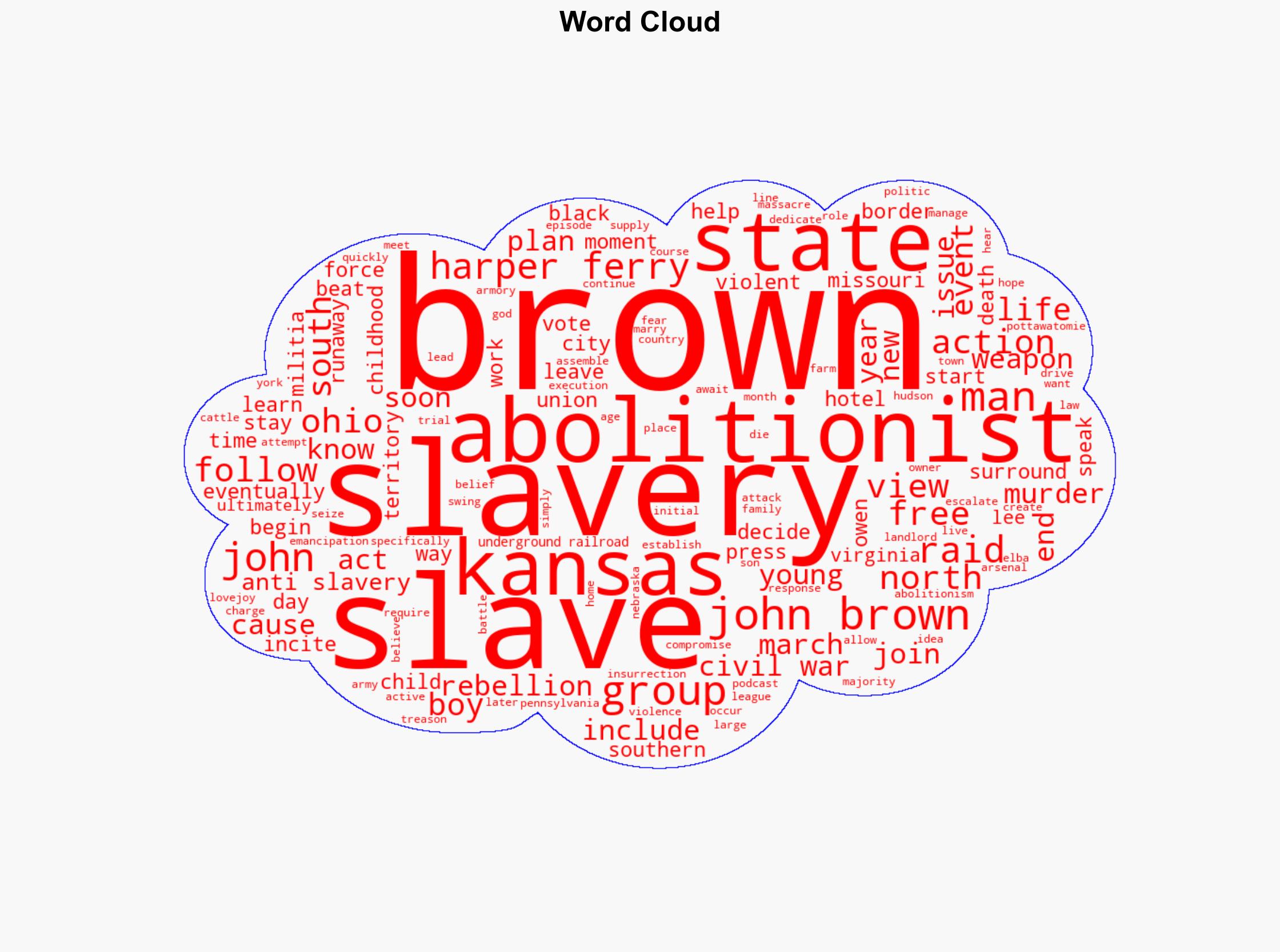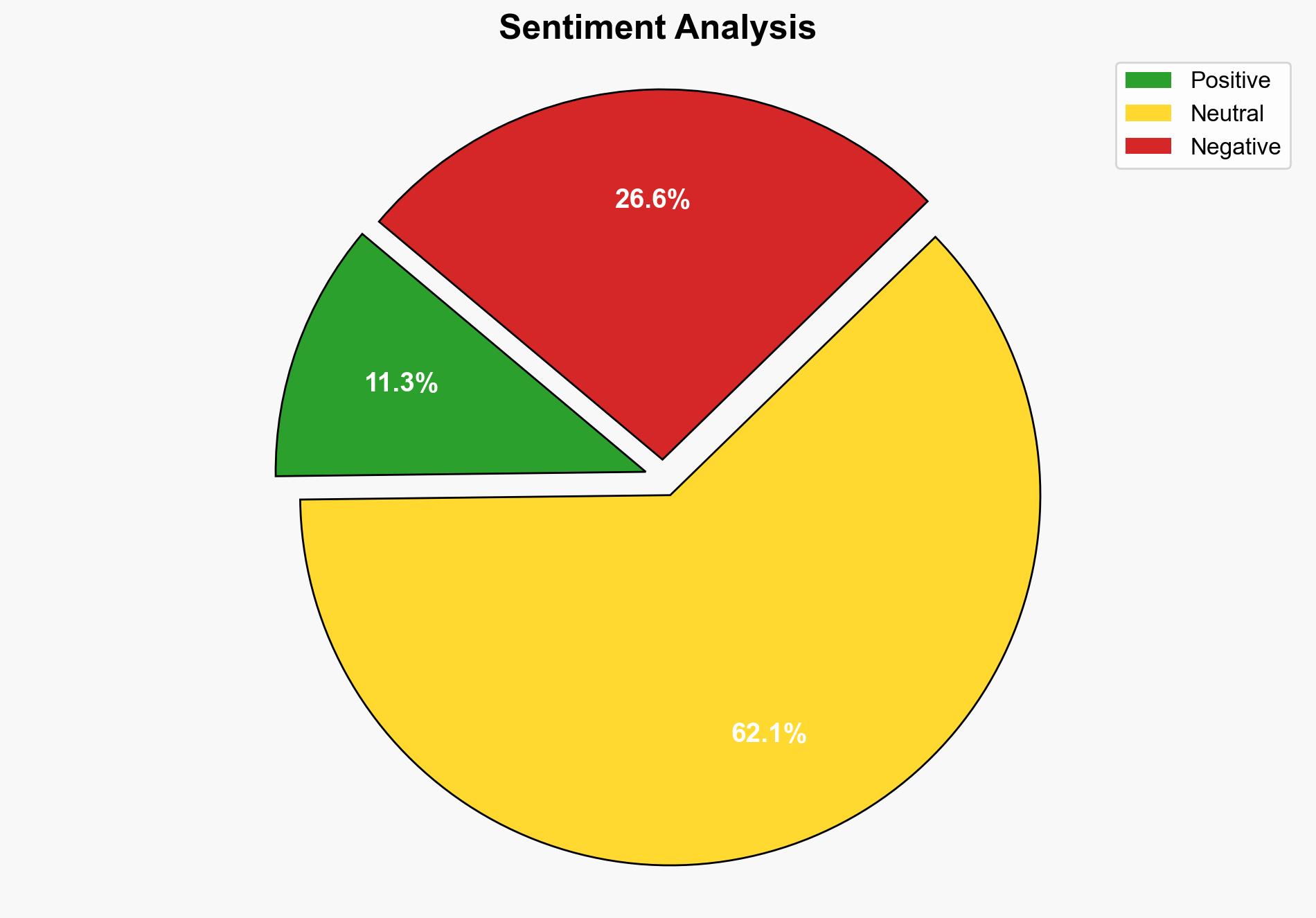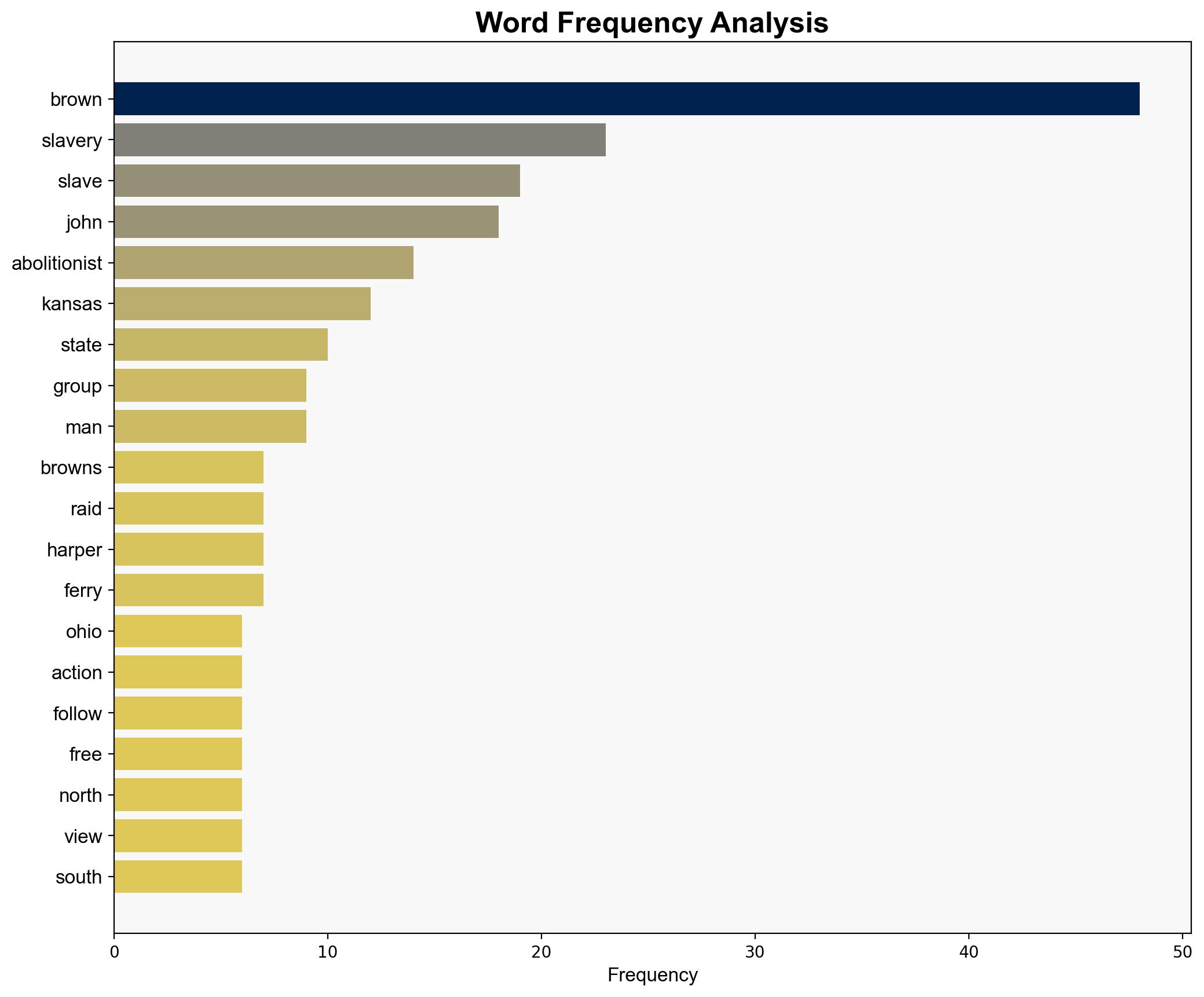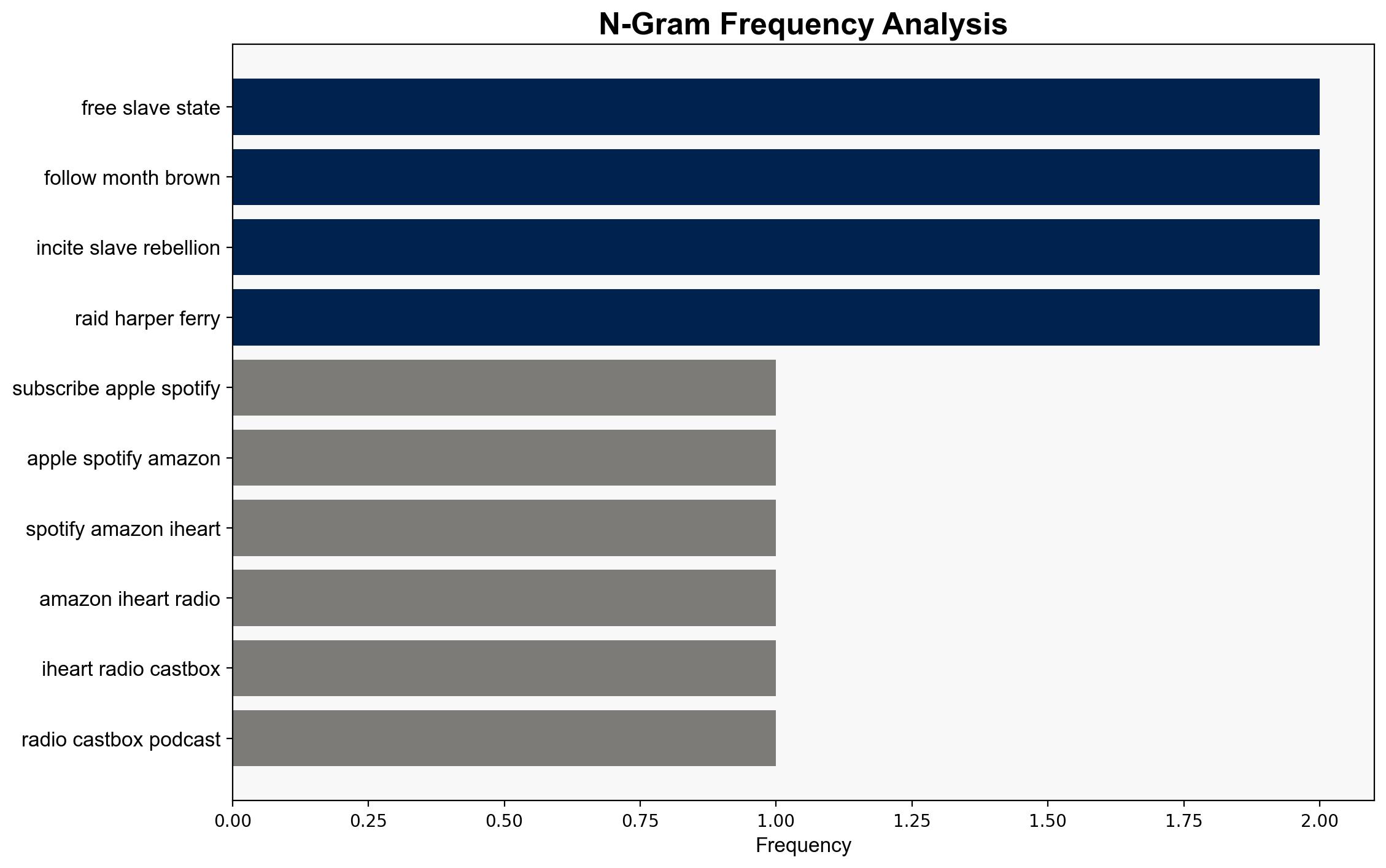John Brown – Everything-everywhere.com
Published on: 2025-09-28
Intelligence Report: John Brown – Everything-everywhere.com
1. BLUF (Bottom Line Up Front)
The analysis suggests that John Brown’s radical abolitionist activities were driven by deeply ingrained beliefs and personal experiences, with a high confidence level that his actions were a calculated response to systemic injustices. The most supported hypothesis is that Brown’s militant approach was a strategic choice to catalyze broader societal change. Recommended action includes monitoring similar ideological movements for potential escalation and understanding historical patterns to mitigate future radicalization.
2. Competing Hypotheses
1. **Hypothesis A**: John Brown’s radical actions were primarily driven by personal experiences and moral convictions, leading him to adopt militant tactics as a necessary means to end slavery.
2. **Hypothesis B**: Brown’s activities were influenced by external abolitionist networks and socio-political pressures, which pushed him towards more extreme measures as a form of strategic alignment with broader abolitionist movements.
Using the Analysis of Competing Hypotheses (ACH) 2.0, Hypothesis A is better supported due to the detailed personal history and specific events that shaped Brown’s ideology, such as witnessing the beating of a young slave and the murder of Elijah Parish Lovejoy.
3. Key Assumptions and Red Flags
– **Assumptions**: It is assumed that Brown’s personal experiences had a direct and significant impact on his radicalization. Another assumption is that Brown’s militant actions were solely for the cause of abolitionism without personal gain.
– **Red Flags**: The narrative may overlook potential influences from contemporaneous abolitionist leaders or political movements that could have shaped Brown’s strategies.
– **Blind Spots**: The analysis may not fully account for the socio-political climate’s role in shaping Brown’s decisions, potentially underestimating external influences.
4. Implications and Strategic Risks
Brown’s actions highlight the potential for ideological movements to escalate into violence, posing risks of civil unrest. The historical context suggests that similar patterns could emerge in modern movements, leading to increased polarization and potential conflict. The psychological impact of witnessing systemic injustice can drive individuals towards radical actions, emphasizing the need for early intervention strategies.
5. Recommendations and Outlook
- Monitor current ideological movements for signs of radicalization and potential violence.
- Develop educational programs to address systemic injustices and prevent radicalization.
- Scenario Projections:
- Best Case: Increased awareness and education lead to peaceful advocacy and reform.
- Worst Case: Escalation of radical movements leads to widespread civil unrest.
- Most Likely: Continued ideological tensions with isolated incidents of violence.
6. Key Individuals and Entities
– John Brown
– Elijah Parish Lovejoy
– Fredrick Douglass
– Owen Brown
7. Thematic Tags
national security threats, radicalization, historical analysis, ideological movements





